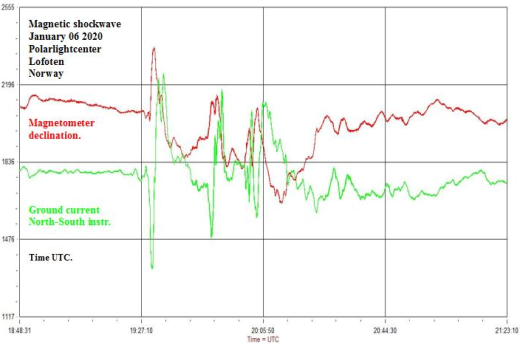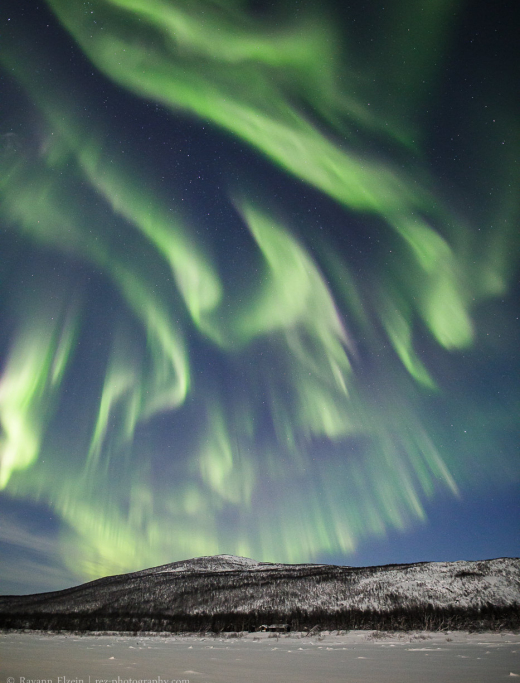Weird Stuff/Unexplained
See other Weird Stuff/Unexplained Articles
Title: Electricity Mysteriously “Started Flowing” Through Norway’s Soil on Monday
Source:
Space Weather News
URL Source: https://spaceweather.com/archive.ph ... ew=1&day=07&month=01&year=2020
Published: Jan 6, 2020
Author: Staff
Post Date: 2020-01-10 19:01:11 by Deckard
Keywords: None
Views: 2062
Comments: 4
Yesterday, Jan. 6th, something unexpected happened in the soil of northern Norway. "Electrical currents started flowing," reports Rob Stammes, who monitors ground currents at the Polarlightcenter geophysical observatory in Lofoten. This chart recording shows the sudden surge around 1930 UT: "It seemed to be some kind of shockwave," says Stammes. "My instruments detected a sudden, strong variation in both ground currents and our local magnetic field. It really was a surprise." NASA's ACE spacecraft detected something as well. About 15 minutes before the disturbance in Norway, the interplanetary magnetic field (IMF) near Earth abruptly swung around 180 degrees, and the solar wind density jumped more than 5-fold. Earth may have crossed through a fold in the heliospheric current sheet--a giant, wavy membrane of electrical current rippling through the solar system. Such crossings can cause these kind of effects. While currents flowed through the ground, auroras filled the sky. Rayann Elzein photographed the corresponding outburst of lights from Utsjoki, Finland: "What a surprise!" says Elzein. "The auroras were sudden and dynamic, with fast-moving green needles and several purple fringes!" The auroras and ground currents were caused by the same thing: Rapidly changing magnetic fields. High above Earth's surface, magnetic vibrations shook loose energetic particles, which rained down on the upper atmosphere, creating auroras where they struck. Just below Earth's surface, magnetic vibrations caused currents to flow, triggering Rob Stammes' ground sensors. "We couldn't see the auroras in northern Norway because of cloud cover," says Stammes, a little ruefully. "We had to be satisfied with the electricity underfoot."


Post Comment Private Reply Ignore Thread
Top • Page Up • Full Thread • Page Down • Bottom/Latest
#1. To: Deckard (#0)
We're doomed! Do I have time to order a pizza delivery?
Don't forget the beer !
Si vis pacem, para bellum Rebellion to tyrants is obedience to God. "If there are no dogs in Heaven, then when I die I want to go where they went." (Will Rogers) "No one ever rescues an old dog. They lay in a cage until they die. PLEASE save one. None of us wants to die cold and alone... --Dennis Olson " People that say money can't buy you happiness, have never paid an adoption fee
Watch next week on Star Trek as Captain Kirk encounters a giant, wavy membrane of electrical current rippling through the solar system.
That pic does resemble some of the special effects used back in 1960s sci-fi shows, doesn't it? I can see why you said that.
#2. To: Tooconservative (#1)
#3. To: Deckard (#0)
#4. To: misterwhite (#3)
Watch next week on Star Trek as Captain Kirk encounters a giant, wavy membrane of electrical current rippling through the solar system.
Top • Page Up • Full Thread • Page Down • Bottom/Latest
[Home] [Headlines] [Latest Articles] [Latest Comments] [Post] [Mail] [Sign-in] [Setup] [Help] [Register]
